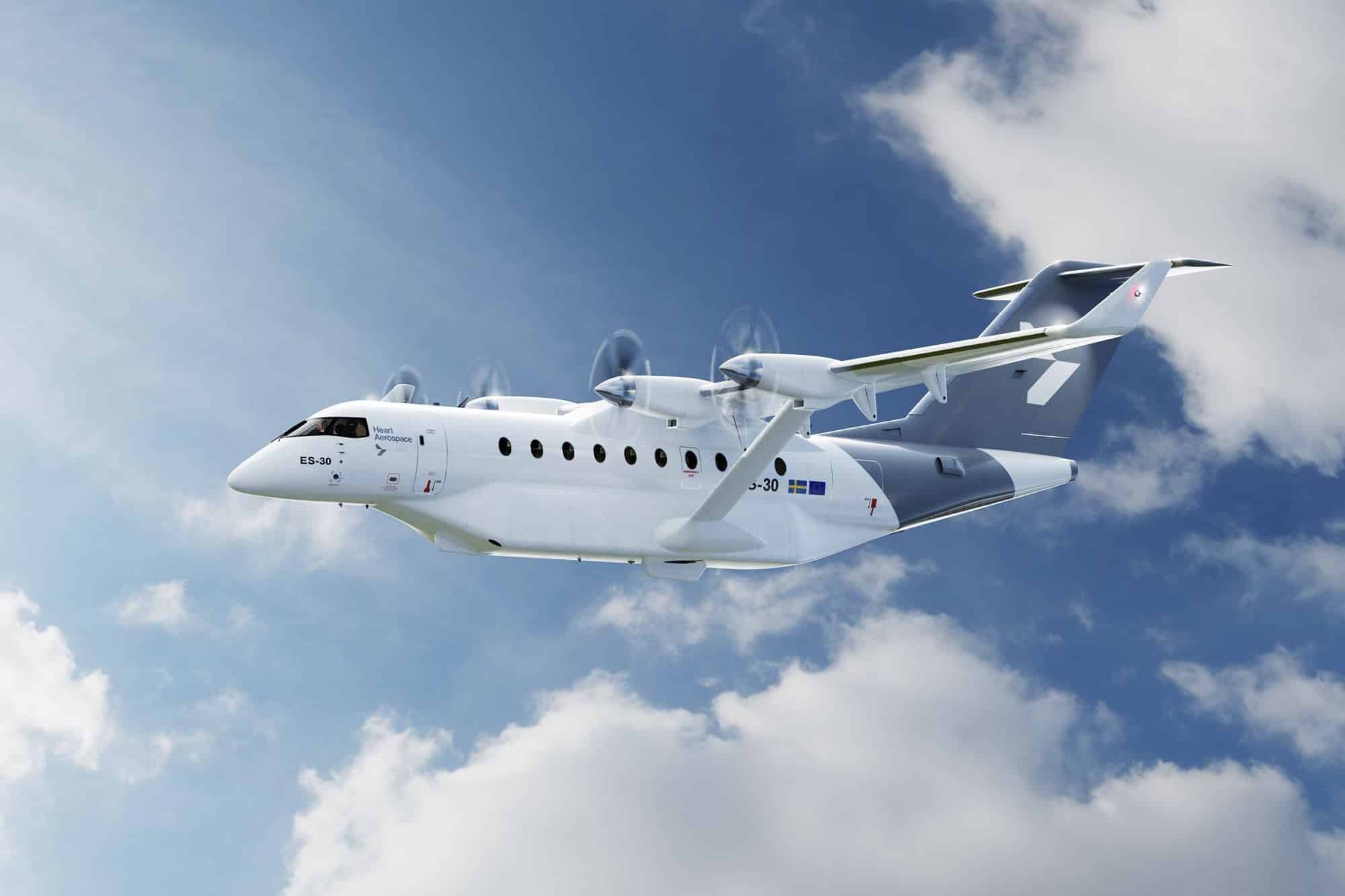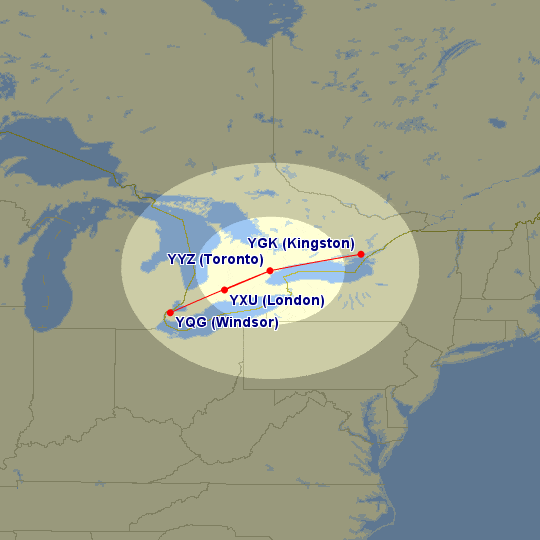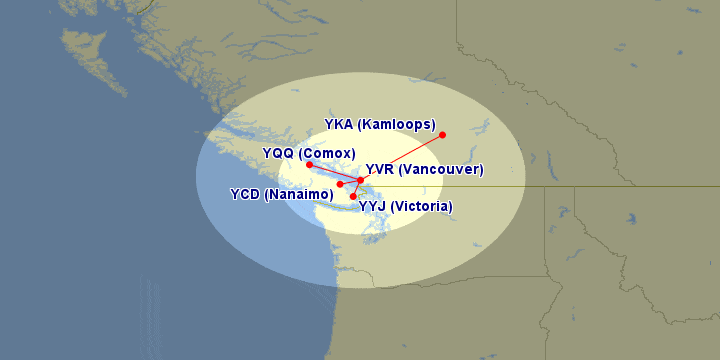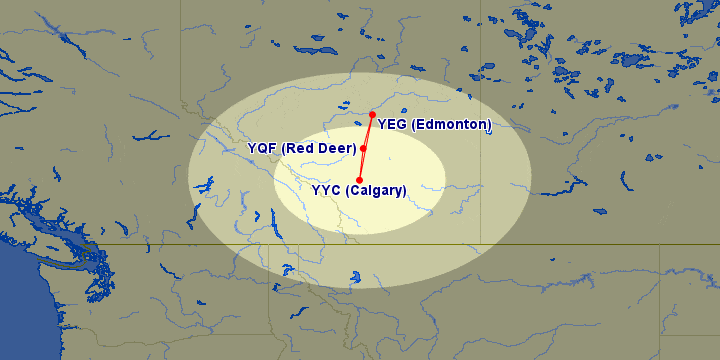With fuel costs rising, governments around the world increasing airport taxes, and the travelling public becoming more and more conscious of their carbon footprint, airlines have been looking for ways to both expand their operations and increase environmental sustainability.
Thus, it comes at no surprise that, following in the footsteps of a few US carriers, Air Canada has announced a purchase agreement for 30 ES-30 electric-hybrid aircraft.
Air Canada Purchases Electric Aircraft
Set to launch in 2028, Air Canada’s 30 ES-30 aircraft will carry passengers across regional and commuter routes. The effects on climate change will be significant, as these are likely to be short routes with multiple daily frequencies.
The ES-30 is a small electric airplane designed by Swedish airplane manufacturer Heart Aerospace with a passenger capacity of 30 and electric motors powered by batteries. There will be minimal noise and zero carbon emissions.
The aircraft will use lithium-ion batteries, and will have a fully loaded range of 200km. With power supplemented by generators, the range can increase to 400km and even 800km if there are 25 passengers or fewer. The ES-30 can be charged to full in 30–50 minutes.
Air Canada will be the launch customer of the ES-30 and has also invested $5 million in Heart Aerospace, all in the hopes of meeting Air Canada’s net zero emissions target for 2050.
Prior to the purchase of the ES-30, Air Canada has already been looking at sustainable aviation fuels and carbon capture as part of their zero-emissions goal.

Cabin Comfort and Potential Routes
With only 30 seats, the ES-30 will be Air Canada’s smallest airplane.
The ES-30 will run along regional and commuter routes with a 2-1 configuration, presumably with only an economy class cabin, similar to the Bombardier Q400s currently used on many commuter routes.
Indeed, the availability of solo seats on this aircraft would be quite welcome. Throw in a quiet cabin and no emissions, and the ES-30 promises to be a unique flying experience on Air Canada’s shorter regional routes.
When it comes to potential routes, I imagine the most likely candidates for the 30-seater ES-30 aircraft would be routes that link major hubs with small but nearby commuter hotspots.
For example, London, Ontario falls within 200km of Toronto Pearson, making it a great candidate for the 45-minute hop. Kingston and Windsor are also within 400km, so the ES-30 could make this journey with additional generator power.

From Vancouver, many of Air Canada’s existing routes to Vancouver Island could be served by the ES-30. Indeed, many competing regional airlines like Harbour Air have already made the switch over to electric on these island-bound routes.

The Calgary–Red Deer–Edmonton corridor strikes me as another possibility where the ES-30’s commuter-oriented capabilities might be put to good use.

Ottawa–Montreal fits within the aircraft’s range as well, although this is a route where demand may well exceed the capacity of the ES-30’s seating plan.

Conclusion
Air Canada has purchased 30 ES-30 electric-hybrid aircraft from Swedish manufacturer Heart Aerospace. The ES-30 will have 30 seats in a 2-1 configuration, most likely in an all-economy arrangement.
The ES-30 has a range of 200km if fully electric, 400km as electric-hybrid, and 800km if the passenger load is limited to 25. With this versatility, Air Canada can deploy the ES-30 on almost all commuter short-haul flights from its major hubs.
This goes a long way towards supporting Air Canada’s goal of net zero emissions by 2050, and should improve the sustainability and economics of many of the regional and commuter routes in the network.




















“many competing regional airlines like Harbour Air have already made the switch over to electric on these island-bound routes” Nope not a single airline operates comercial service with electric aircraft plans. there are tests and orders for planes but not delivered and operating. Harbour Air’s 1 eBeaver is still undergoing testing. planning to yes but “already” no. also lots of routes out of the maritimes in Halifax could take over routes like Sydney, Saint John,Charlottetown, Fredricton, Bathurst, or even Îles-de-la-Madeleine